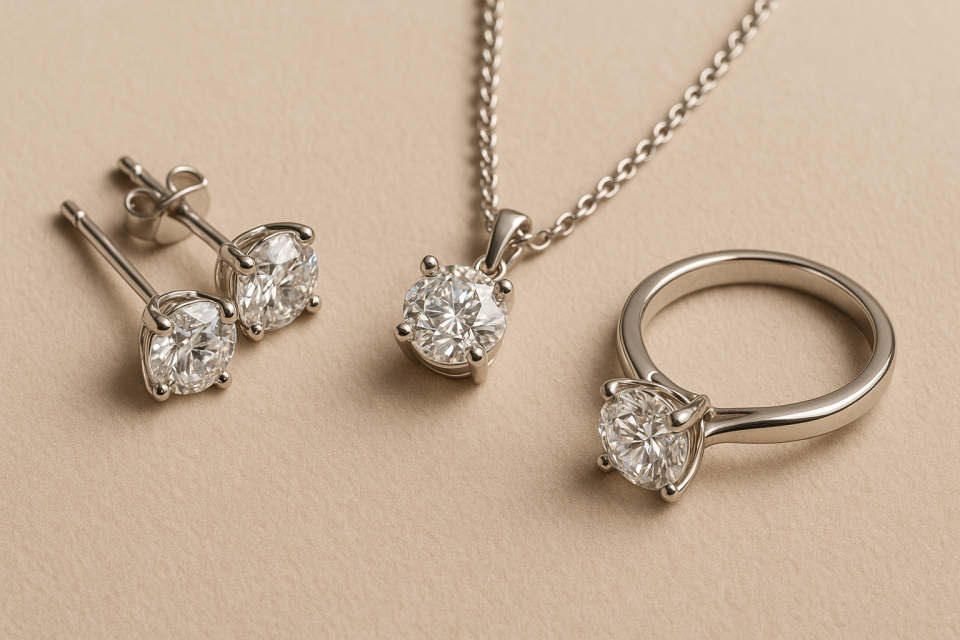Lab-Grown Diamond Jewelry Care and Maintenance Guide
Lab-grown diamonds have quickly become a favorite among jewelry lovers for their ethical sourcing, environmental benefits, and stunning brilliance. They share the same physical, chemical, and optical properties as mined diamonds, making them equally durable and timeless. However, like all fine jewelry, proper care is essential to maintain their sparkle and ensure longevity. This guide provides expert-backed advice for everyday handling, cleaning, storage, and maintenance—so your lab-grown diamond jewelry remains as dazzling as the day you bought it.
Understanding Lab-Grown Diamond Durability
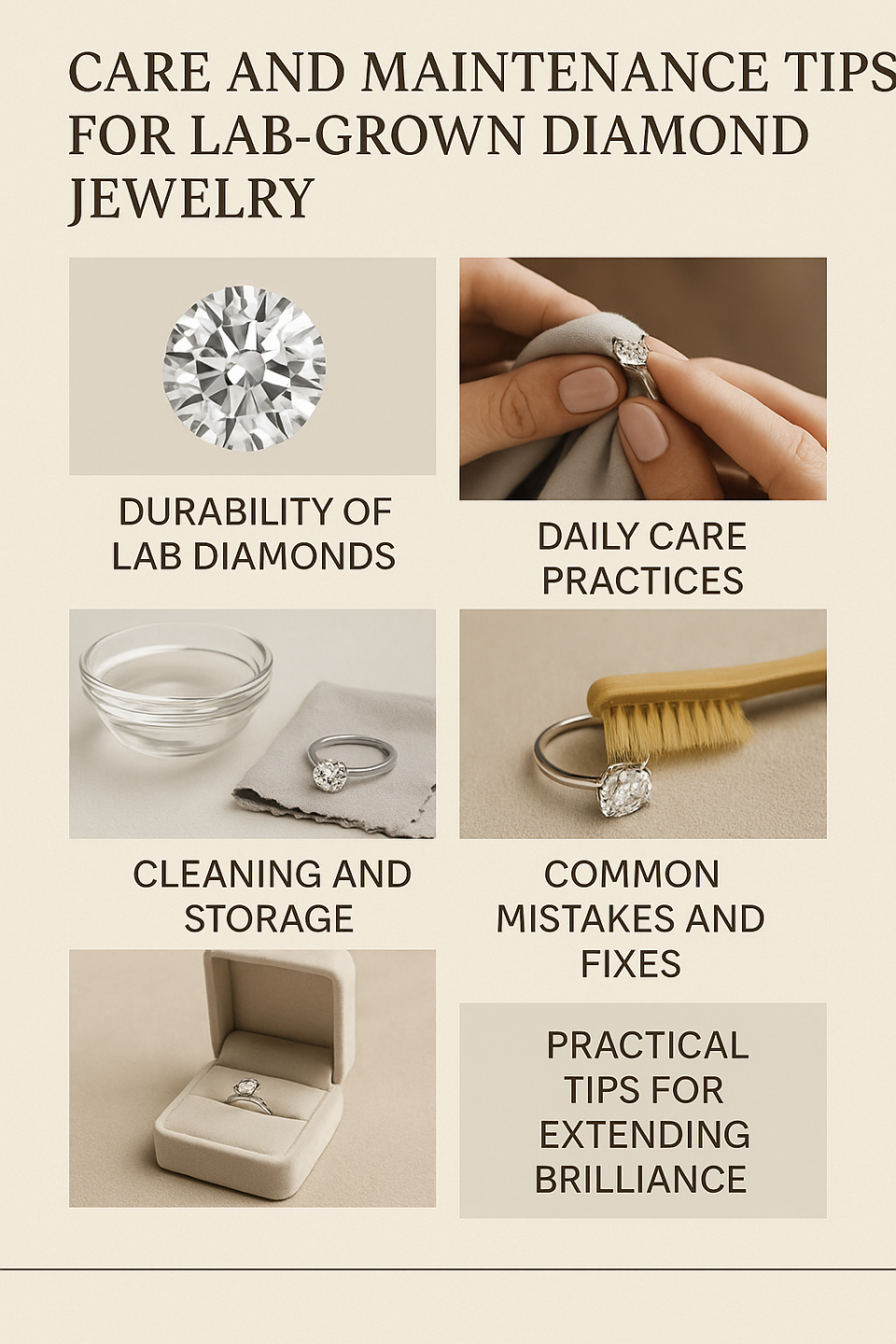
Lab-grown diamonds are among the hardest materials known to man, with a perfect 10 rating on the Mohs scale. This gives them:
- Superior Scratch Resistance: The diamond itself resists scratches from almost all other materials.
- Exceptional Structural Integrity: Ideal for daily wear, whether in engagement rings or necklaces.
- Potential Vulnerability in Settings: While diamonds are tough, the metal settings—gold, platinum, or silver—can still bend or scratch if not handled with care.
Takeaway: Your diamond may be nearly indestructible, but the jewelry setting needs consistent attention.
Daily Care: Protecting Your Jewelry Every Day
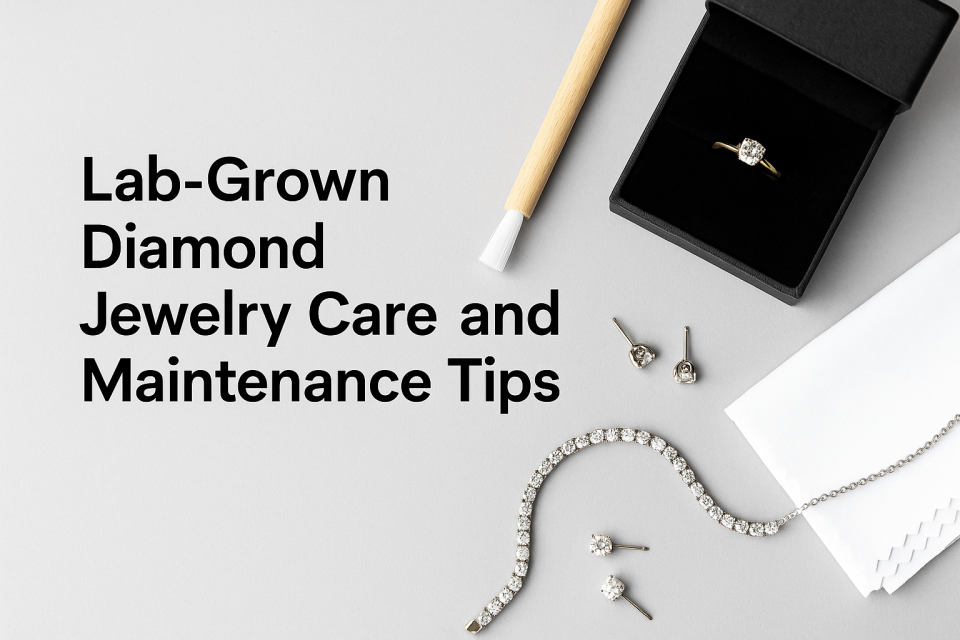
- Remove Jewelry During Physical Activity: Exercise, heavy lifting, or manual labor may loosen prongs or cause micro-abrasions on settings.
- Keep Away From Harsh Chemicals: Household cleaners, chlorine, and bleach can corrode metals and leave residues on diamonds.
- Apply Cosmetics First, Jewelry Last: Lotions, perfumes, and hairspray can create a cloudy film over diamonds.
- Handle With Care: Hold jewelry by its band or chain instead of gripping the stone.
Cleaning Your Lab-Grown Diamond Jewelry
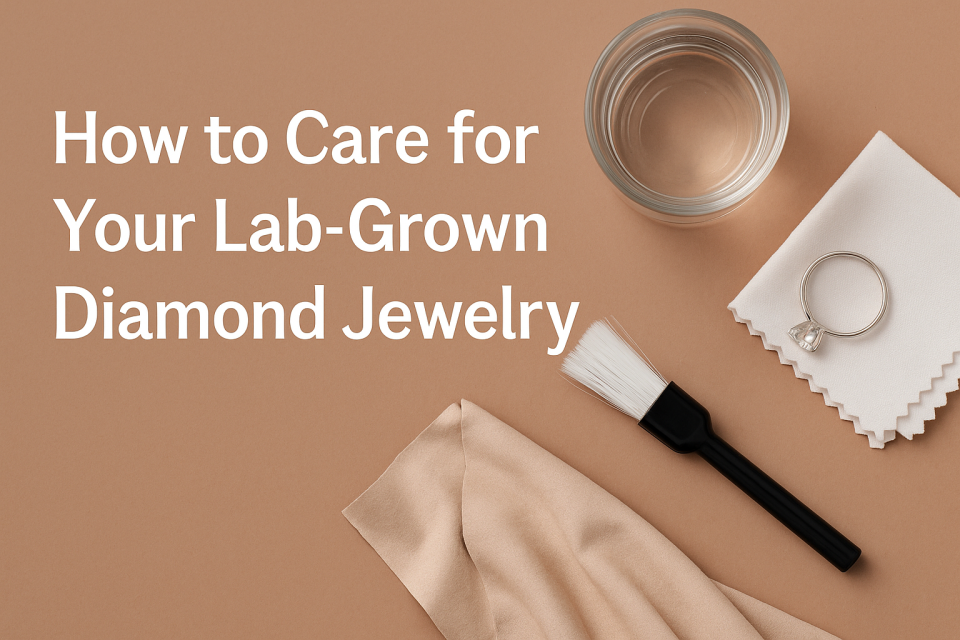
At-Home Cleaning Steps
- Prepare a bowl of warm water mixed with mild dish soap.
- Soak jewelry for 15–20 minutes to loosen dirt and oils.
- Gently scrub using a soft-bristled toothbrush, paying attention to the underside of the stone and around prongs.
- Rinse thoroughly in clean lukewarm water and dry with a lint-free cloth.
Professional Cleaning
Schedule professional cleaning and inspection at least once a year. Jewelers use specialized ultrasonic or steam cleaners and check for loose settings, ensuring your jewelry’s integrity.
Proper Storage
Store each piece separately in soft-lined pouches or a compartmentalized jewelry box to avoid scratches and tangling.
Common Mistakes & How to Avoid Them
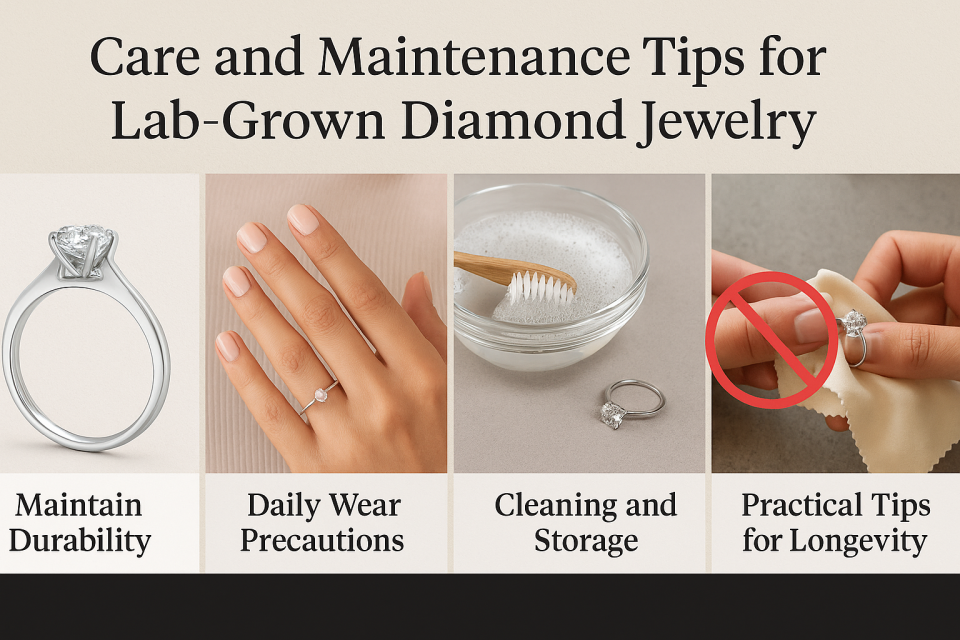
- Wearing Jewelry to the Gym or Pool: Sweat, impact, and chlorine exposure can dull finishes and loosen stones. Remove before workouts or swimming.
- Skipping Routine Inspections: Loose prongs often lead to lost stones. Have your jeweler check settings at least every 6–12 months.
- Using Abrasive Cleaners: Toothpaste or baking soda may scratch metal surfaces. Stick to mild, non-abrasive soaps.
- Improper Storage: Storing multiple pieces together may cause scratches or tangles. Always store separately.
Tips to Keep Diamonds Sparkling Longer
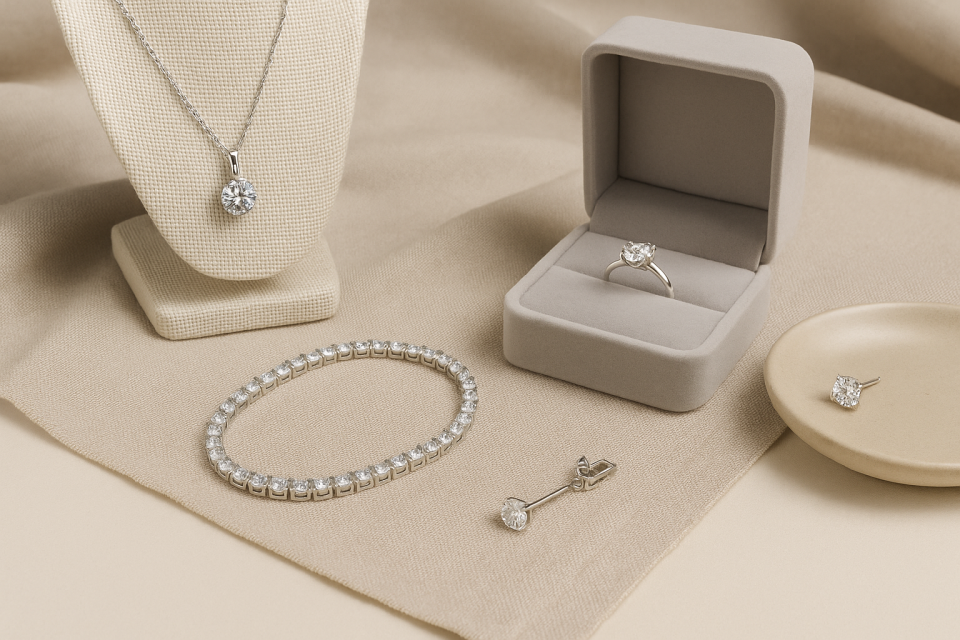
- Clean Regularly: Monthly cleaning prevents oil and dust buildup.
- Be Selective With Ultrasonic Cleaners: Use only when approved by your jeweler and avoid fragile settings.
- Polish Settings When Needed: Professional polishing restores the luster of worn metal bands and prongs.
- Remove Jewelry Before Lotions or Sunscreen: Residue buildup can cloud the stone’s sparkle over time.
Conclusion
Lab-grown diamonds are built to last and designed to shine, but proper care ensures they remain as breathtaking as the day you first wore them. By following these practical tips—removing jewelry during high-impact activities, cleaning regularly, and scheduling professional inspections—you can maintain brilliance and protect your investment for years to come.

